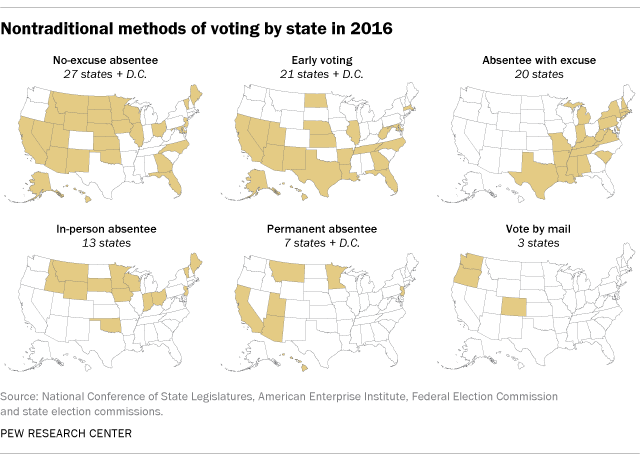The dems have run the Illinois house for a long time.
How is that not comparable. 61% is more than enough to control it. It's not like 52% of something.
They're exactly comparable. Both situations the party in power has taken advantage of it to make sure they keep it.
It's wrong in both states. IT's wrong wherever it happens regardless of who's doing it. Simple as that.
It's not comparable because the vote disparity is much higher in one case than in the other.
Vote disparity is unavoidable, because party support is not spread evenly on a regional basis. Some regions heavily support one party ; other regions mildly support the other party. Since the whole point is to elect people to represent those regions, and elections still go to whoever get the biggest share of votes, this will result in an unavoidable disparity between popular vote and seat distribution.
Even in a system where districts are drawn by a neutral commission on purely demographic data, it's possible for a party to get 40% of the votes and 54% of the seats (Liberal party of Canada, 2015). In this case, the number is further skewed by a multi-party system (since, in a three party system, which most of Canada has, it's possible to win a riding on as little as 34% of the local vote (with the other two parties splitting 33-33) ; falling to 25.1% with four contending parties (other three parties split 25-25-24.9)). We'd expect a two-party system to produce closer results (since you effectively need to beat the 50% mark to claim a seat), but even so, some seats will be won with 50.1% of the vote and others with 75% of the vote, because some areas vote more heavily in favor of one party than another.
The numbers for the Illinois house of representative (note that the 61% number is not for the Illinois house, but for the Federal House's Illinois delegation) don't support a case of massive gerrymandering. The fact that the Democrats have been in control a long time reflect the fact that, from 2006 onward at least, they had a clean majority (more than 50% of the vote) every election - even in a purely proportional system, they'd still have won control of the Illinois house. That they won the house each elections in that cycle cannot be held to indicate gerrymandering ; it's the expected result.
For another thing, for four of the elections in that period, there is very little vote disparity. In 2006, the Democrats got 55.9% of seats with 53.6% of the vote, int 56.8% of seats with 58% of votes (yes, they got a lower share of seats than share of votes), in 2012 they got 54.2% of seats off 51.4% of votes, and in 2016 56.8% of seats off 53% of the vote. These are extremely, almost boringly routine numbers for a single-turn two-party representative democracy. Years like 2014 (60.1% of seats over 50.5% of votes) and 2010 (59.3% of seats, 50.6% of votes) show a greater disparity, but even then we're still in the single-digit difference between voter counts and seat count.
Note also that they got 60% of seats exactly once in that period, and then only by the slimmest margin (60.1% in 2014).
All in all, those numbers seem to indicate that while there probably is some gerrymandering, it's just not particularly significant. And it definitely indicate that such gerrymandering has never robbed the Republicans of a win.

